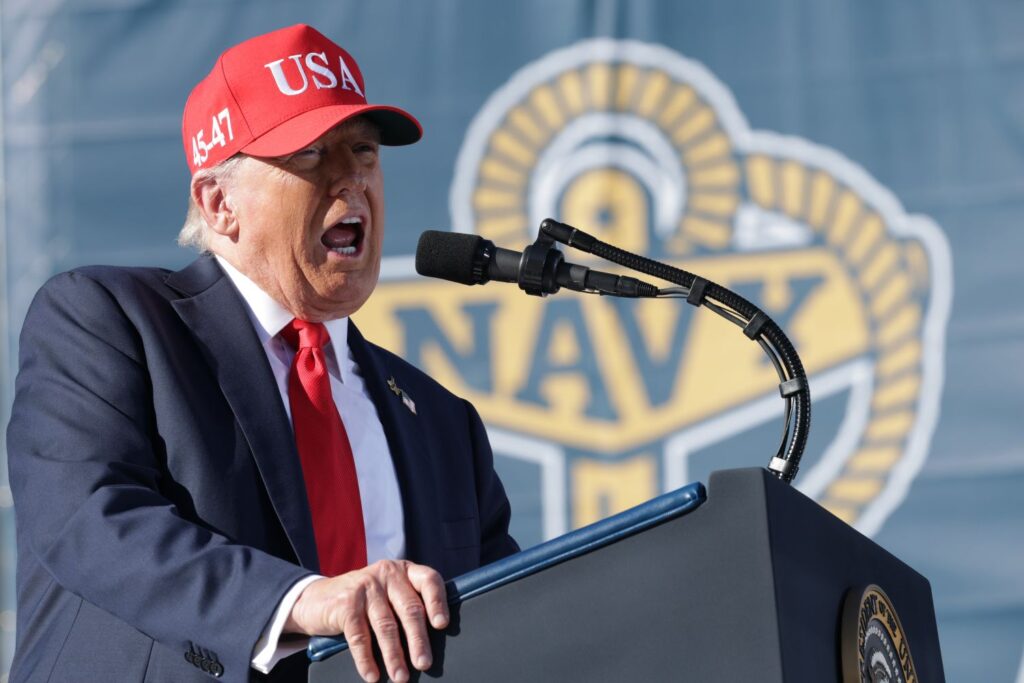Key Takeaways
- The current government shutdown isn’t expected to leave scars on the economy, but that could change if President Donald Trump follows through on a threat to fire thousands of federal workers.
- In past shutdowns, the U.S. economy has continued to chug along, with employers adding jobs and stocks rising.
- Permanently laying off federal workers would be unprecedented and could damage the labor market at a time when it was already deteriorating.
The last few times the U.S. government shut down for days on end, the U.S. economy and financial markets emerged unscathed—but President Donald Trump’s threat to fire federal workers en masse complicates the outlook this time around.
Trump has threatened to permanently lay off government workers and end federally funded projects favored by Democrats during the shutdown. If carried out, those actions could deal a noticeable blow to the labor market at a time when hiring was already looking shaky.
“Well, there could be firings,” Trump said last week in an interview on One America News Network. “And it could also be other things. We could cut projects they wanted, favorite projects, and they’d be permanently cut.”
In past shutdowns, hundreds of thousands of federal workers were sent home without pay. However, they were brought back to work and given back pay as soon as the shutdown ended, limiting the damage to the overall job market. Indeed, the U.S. economy added jobs during the three previous long shutdowns in 2019, 2013, and 1996.
How This Affects The Economy
Although past government shutdowns have had little impact on the economy, that could change if President Trump fires thousands of federal workers. A wave of mass firings could undermine the labor market at a time when employers are already adding the fewest jobs in years.
The current shutdown could prove to be one of the longer ones, as neither Republicans nor Democrats have yet budged toward a compromise. Financial betting site Polymarket is currently pricing in 30% odds that the shutdown could last 30 days or more, making it the longest in history if it exceeds the 35-day shutdowns of 2018 and 2019.
White House officials have said there could be thousands of permanent layoffs, but have not specified the timing of the dismissals or which government services would be affected.
Layoff Threat Fuels Uncertainty
The layoffs would come at a time when the job market is already in the midst of a noted slowdown. The economy lost jobs in June for the first time in over four years, and added fewer than forecasters had expected in July and August. Officials at the Federal Reserve, concerned about the possibility of a wave of layoffs, initiated a campaign of rate cuts in September to boost the economy and encourage hiring.
A fresh round of federal layoffs is not guaranteed to happen. The layoff threat could prove to be just a negotiation tactic, or the two sides could reach a deal before the firings are implemented. Even if they did happen, they would likely face court challenges from workers, similar to how courts have thwarted some of the Trump Administration’s efforts to fire federal workers through the DOGE task force, John Ryding and Conrad DeQuadros, economists at Brean Capital, wrote in a research note.
So far, financial markets have largely brushed off concerns about the damage from the shutdown, with the S&P 500 stock index up roughly 1.4% over the last five days.
Still, the firing threat adds an element of chaos to a showdown that could deepen the gloom of already pessimistic consumers.
Shutdowns typically leave consumers pessimistic about the economy and their own financial situation. Economists expect consumer sentiment surveys in the coming weeks to be among the worst readings ever, as consumers have already been growing increasingly worried about tariffs, inflation, and the weak job market. Forecasters at Deutsche Bank said it’s likely the University of Michigan’s Survey of Consumers index will break a record low when it’s released Friday.

